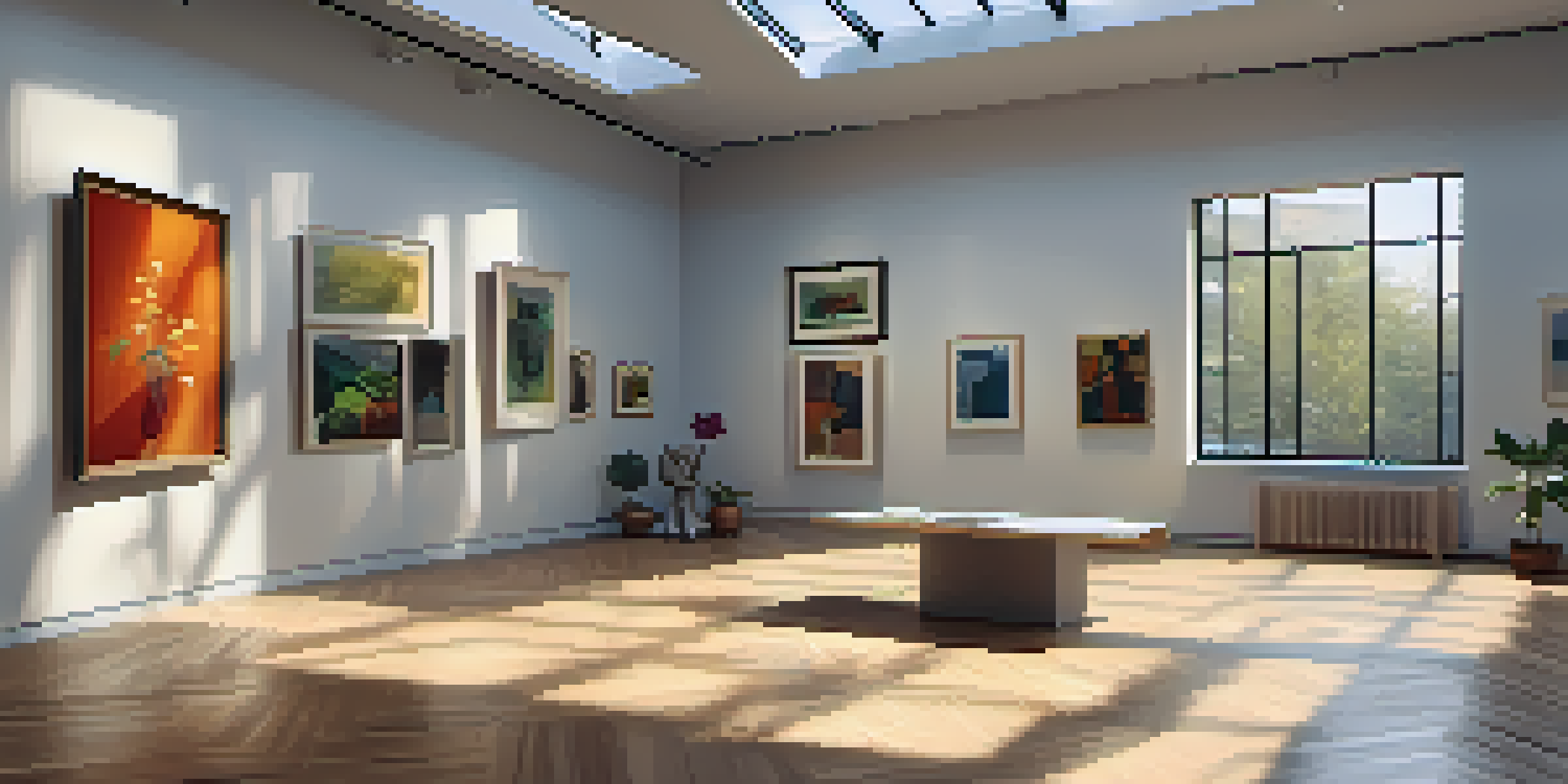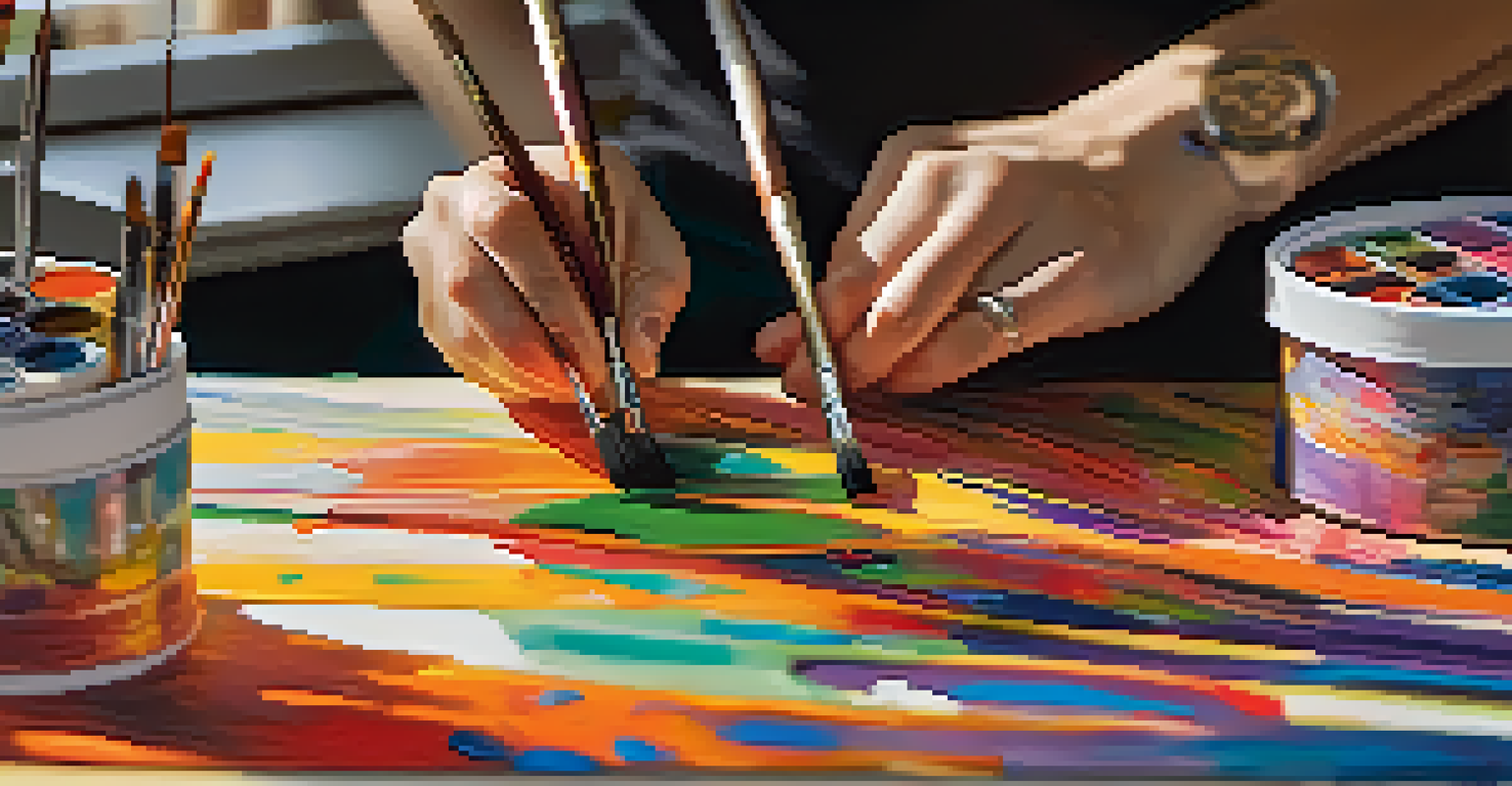Art Investment Strategies: Diversifying Your Collection Wisely

Understanding the Art Market: Trends and Insights
To dive into art investment, it’s crucial to comprehend the market dynamics. Art is not just about aesthetics; it’s also influenced by trends, historical significance, and artist reputation. Keeping an eye on auction results and gallery exhibitions can provide valuable insights into what’s currently in demand.
Art is not freedom from discipline, but disciplined freedom.
For instance, contemporary art has been gaining traction, with many younger collectors showing interest in emerging artists. This trend can shift quickly, so staying informed is key. Just like the stock market, the art market can fluctuate, and being aware of these changes can help guide your investment decisions.
By understanding these trends, you can make informed choices about which pieces to add to your collection. A well-informed collector is more likely to invest wisely, ensuring that their collection not only delights the eye but also appreciates in value over time.
Setting Clear Investment Goals for Your Collection
Before you start purchasing art, it’s essential to establish clear investment goals. Are you looking for pieces that will appreciate over time, or do you want art that resonates personally? Defining your objectives will help narrow your focus and guide your purchasing decisions.

For example, if your goal is to build a collection that increases in value, you might focus on established artists or those with a growing reputation. On the other hand, if your aim is to enjoy the art in your home, you might choose pieces based on personal taste rather than market trends.
Understand Art Market Trends
Staying informed about auction results and gallery exhibitions helps collectors navigate the fluctuating art market.
Having clear goals not only streamlines your purchasing process but also allows you to evaluate potential investments more effectively. This clarity can lead to a more satisfying and rewarding art collection.
Diversifying Art Investments: Different Mediums and Styles
Just like with stocks, diversifying your art collection can mitigate risk and enhance potential returns. Consider incorporating various mediums, such as paintings, sculptures, and photography, to create a well-rounded portfolio. Each medium can respond differently to market conditions, providing a buffer against volatility.
The best investment on Earth is earth.
For instance, while contemporary paintings may be trending, investing in photography or traditional sculpture can offer stability. Additionally, exploring different styles—from abstract to realism—can add depth to your collection and appeal to a broader range of potential buyers.
Diversification not only helps protect your investment but also enriches your personal experience as a collector. You’ll have the opportunity to explore different artistic expressions and discover new favorites along the way.
Investing in Emerging Artists: Risks and Rewards
Investing in emerging artists can be an exciting yet risky endeavor. These artists often have lower price points, allowing you to acquire unique pieces without breaking the bank. However, the challenge lies in predicting which artists will gain recognition and whose work will appreciate over time.
For example, many collectors have found success by following art fairs and exhibitions where new talent is showcased. By attending these events, you can discover artists before they hit the mainstream, potentially increasing the value of your investment as their careers progress.
Set Clear Investment Goals
Defining your objectives for art investment streamlines decision-making and enhances collection satisfaction.
While the risk is higher, the rewards can be substantial if you choose wisely. Investing in emerging artists not only supports new talent but also adds a sense of adventure to your collection.
The Importance of Art Provenance and Authenticity
When investing in art, understanding provenance—the history of ownership of a piece—is vital. A clear provenance can significantly enhance an artwork's value, while questionable authenticity can lead to costly mistakes. Always ensure that the pieces you acquire come with proper documentation and verification.
For instance, artworks with a well-documented history, such as notable exhibitions or previous ownership by respected collectors, tend to appreciate more over time. On the contrary, buying art without proven authenticity can result in financial losses and headaches.
Investing in art with clear provenance not only protects your investment but also adds to the story of your collection. Each piece becomes more than just an aesthetic choice; it becomes a part of art history.
Building Relationships with Galleries and Artists
Establishing relationships with galleries and artists can be incredibly beneficial for your art investment journey. These connections can provide insights into upcoming exhibitions, new works, and trends that may not yet be on the radar of the broader market. Plus, galleries often offer exclusive access to new pieces before they hit the public eye.
For instance, attending gallery openings or artist talks can create opportunities to engage with the art community and learn directly from those involved. This knowledge can inform your investment decisions and help you identify promising artists or significant works.
Diversify Your Art Collection
Incorporating various mediums and styles in your collection can mitigate risk and increase potential returns.
Building these relationships not only enriches your understanding of art but also enhances your overall collecting experience. You'll gain a deeper appreciation for the pieces you choose to invest in and the stories behind them.
Art Investment Risks: Understanding Market Volatility
Like any investment, art carries its risks, especially when markets fluctuate. Economic downturns can affect art prices, and trends can shift suddenly, leaving collectors with pieces that may not hold their value. Understanding these risks is crucial for making informed investment decisions.
For example, during economic recessions, luxury goods—including art—may see a decline in demand. This highlights the importance of diversifying your collection and not investing solely based on current trends. Consider the long-term value rather than short-term gains.

By understanding and acknowledging these risks, you can better navigate the art market. This awareness can lead to more strategic purchasing decisions that safeguard your investments during uncertain times.